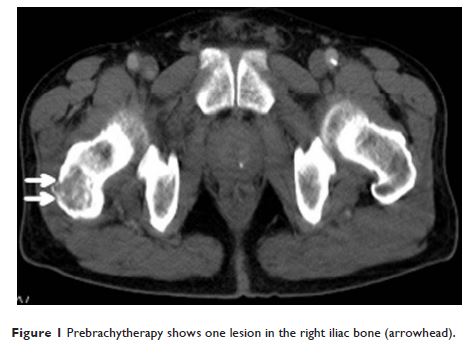108384
论文已发表
注册即可获取德孚的最新动态
IF 收录期刊
- 3.4 Breast Cancer (Dove Med Press)
- 3.2 Clin Epidemiol
- 2.6 Cancer Manag Res
- 2.9 Infect Drug Resist
- 3.7 Clin Interv Aging
- 5.1 Drug Des Dev Ther
- 3.1 Int J Chronic Obstr
- 6.6 Int J Nanomed
- 2.6 Int J Women's Health
- 2.9 Neuropsych Dis Treat
- 2.8 OncoTargets Ther
- 2.0 Patient Prefer Adher
- 2.2 Ther Clin Risk Manag
- 2.5 J Pain Res
- 3.0 Diabet Metab Synd Ob
- 3.2 Psychol Res Behav Ma
- 3.4 Nat Sci Sleep
- 1.8 Pharmgenomics Pers Med
- 2.0 Risk Manag Healthc Policy
- 4.1 J Inflamm Res
- 2.0 Int J Gen Med
- 3.4 J Hepatocell Carcinoma
- 3.0 J Asthma Allergy
- 2.2 Clin Cosmet Investig Dermatol
- 2.4 J Multidiscip Healthc

125I 种子源与外照射放疗对一周期化疗后肺癌骨转移疼痛缓解的作用对比
Authors Xiang Z, Wang L, Yan H, Zhong Z, Liu W, Mo Z, Gao F, Zhang F
Received 24 October 2017
Accepted for publication 20 May 2018
Published 27 August 2018 Volume 2018:11 Pages 5183—5193
DOI https://doi.org/10.2147/OTT.S154973
Checked for plagiarism Yes
Review by Single-blind
Peer reviewers approved by Dr Justinn Cochran
Peer reviewer comments 3
Editor who approved publication: Dr Jianmin Xu
Purpose: This study aimed to compare the outcomes of 125I seed brachytherapy versus external beam radiation therapy (EBRT) for the palliation of painful bone metastases of lung cancer after one cycle of chemotherapy progression.
Materials and methods: We analyzed retrospectively 158 patients with painful bone metastases secondary to lung cancer after one cycle of chemotherapy progression treated between June 2013 and May 2016. Seventy-six patients with 96 lesions received 125I brachytherapy (Group A), whereas 82 patients with 98 metastases received EBRT (Group B). Pain intensity on Brief Pain Inventory, percentage of patients with pain severity, and quality of life were recorded prior to treatment (T0), 2, 4, 6, 8, 12, 16, 20, and 24 weeks (T2, T4, T6, T8, T12, T16, T20, and T24) after treatment during a 24-hour period. Cost-effectiveness and number of treatment appointments were also compared between groups.
Results: One hundred and fifty-eight patients had been treated. Visual analog scale for worst pain in Group A was significantly lower than in Group B at T2, T4, T6, T16, T20, and T24. Group A was superior to group B concerning quality of life scores (T2, T4, T20, and T24), cost-effectiveness, and number of treatment appointments. No significant differences were observed for complications.
Conclusion: Compared with EBRT, 125I seed brachytherapy can be an alternative method for painful bone metastases from lung cancer after one cycle of chemotherapy progression.
Keywords: pain, 125I seed, brachytherapy, EBRT, bone metastases, lung cancer, chemotherapy
